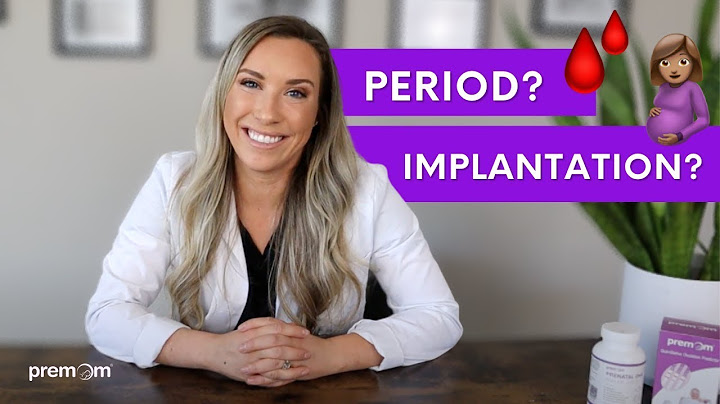Personality disorders like borderline personality disorder (BPD) and narcissistic personality disorder (NPD) have a significant impact on the way a person perceives the world around them. Both conditions can create a distorted view of reality, impacting someone’s thoughts and behaviors. While it’s true that there are clear similarities between BPD and NPD, the conditions are ultimately very different. Show
Comparing borderline personality disorder vs narcissism reveals that while they do have some overlapping symptoms, there are also several aspects that make them distinct from one another. For example, though low self-esteem is common in both, this symptom typically causes people with BPD to feel anger toward themselves, leading to recurring shifts in mood or behavior. In contrast, those with NPD might instead develop an inflated view of themselves to cope, and then turn to others for validation and admiration. Recognizing the similarities and differences between these two conditions is key to management. With a proper diagnosis, people with BPD and NPD can get the help they need. What Is Borderline Personality Disorder (BPD)?BPD might affect up to 1.4% of the population, according to some research. It’s a cluster B personality disorder, which is a type of personality disorder distinguished by emotional volatility. Having BPD can lead to frequent and constant changes in mood, behaviors, and even self-identity. Typically, people with BPD have an extremely negative self-image, which can cause them to change thoughts, interests, and behaviors to better fit a situation. BPD can result in someone often struggling with fears of rejection and abandonment. These feelings can make them behave in volatile and self-destructive ways. Many people with BPD engage in a type of self-harm known as non-suicidal self injury (NSSI), which results in causing physical harm to the body without the intent of suicide. BPD can also make it difficult for someone to maintain stable interpersonal relationships. They may feel lonely or isolated, even when they’re in a relationship. It’s common for their perceptions of others to shift dramatically. It’s also not unusual for those with BPD to have cycles of anxiety, depression, and anger that can last anywhere from a few hours to several days. Symptoms of borderline personality disorder
What Is Narcissistic Personality Disorder (NPD)?It’s estimated that NPD may affect up to 6.2% of the population. Like BPD, it’s also a cluster B personality disorder. The American Psychiatric Association defines NPD as characterized by feelings of entitlement, an inflated view of self, and low levels of empathy. While people with NPD are typically egotistical, they may also have low self-esteem, which can cause them to seek out validation and positive feedback from others. They will have a distorted perception of their own behavior and may blame others for their missteps or failures. Their low self-esteem could also stem from deep shame of their true self, which is why some of them develop a false self that they project when in company with other people. People with NPD prioritize their own feelings and desires above those of others. They struggle to see things from anyone else’s perspective, a trait that can significantly interfere with their interpersonal relationships. It’s not unusual for someone with NPD to manipulate those around them in order to get what they want. There are even some with malignant narcissism that display extreme aggression (to the point of abuse) to others. There are several types of narcissistic personality disorder, including:
While some people with NPD may strive to be in the spotlight, others might instead isolate themselves in order to avoid criticism or rejection. Not all people with narcissism will behave in exactly the same way, but they will still share general traits and symptoms that help differentiate borderline personality disorder vs narcissism. Symptoms of narcissistic personality disorder
The Co-Occurrence of BPD and NPDAlthough BPD and NPD have distinct symptoms, research shows that there’s a strong correlation between BPD and clinical narcissistic personality disorder. One study found thatapproximately 13% of those with BPD also met the diagnostic criteria for NPD. Another report found that as many as 39% of people with BPD may have NPD as well. When BPD and NPD co-occur, someone is likely to have a specific subtype of NPD known as covert, or vulnerable, narcissism. People with this type of narcissism are extremely sensitive to criticism and rejection and may feel distrustful of others. They’re more prone to experience negative emotions and may be socially isolated. Borderline Personality Disorder vs Narcissistic Personality DisorderUnderstanding as much as possible about each of these conditions can be instrumental in successfully navigating symptoms and getting treatment. Similarities of BPD and NPDBPD and NPD can both cause distorted and unhealthy patterns of thoughts and behaviors. People with these conditions have a strong desire for positive attention and validation from others and may react poorly when they don’t receive the affirmation that they want. These behaviors can lead to volatile interpersonal relationships. Both personality disorders can cause extreme sensitivity to criticism or negative feedback. This can result in someone projecting their own faults onto others. People with NPD and BPD have a tendency to see the world in black and white and may use others as scapegoats when they make mistakes. Another similarity with both personality disorders is people with either of these conditions also tend to develop substance abuse issues. Differences between BPD and NPDLooking at BPD vs narcissism shows that people with these conditions have a general inaccurate view of themselves and the world around them. However, the nature of these distortions can vary significantly. Sense of selfPeople with NPD, for example, see themselves as superior to others. They have an inflated sense of their own abilities and their accomplishments. In contrast, those with BPD have an unstable self-image and often see themselves as “bad” or worthless. RelationshipsBPD can cause people to struggle with self-identity and self-worth. This can make them reliant on others for their emotional needs. It’s common for people with BPD to seek out relationships and become attached to others quickly. When people with NPD manipulate others, it’s to fulfill their own wants and needs or to maintain a sense of control.Narcissistic personality disorder is also marked by a lack of empathy, which makes it difficult for someone to understand how their actions impact others. Those with NPD are drawn to relationships because of their desire for admiration or personal gain. People living with NPD want intimate relationships, but their intense emotions and dramatic mood shifts can make them difficult to maintain. While they can care about others on some level, they may become angry or destructive when they fear abandonment. When someone with NPD lashes out at others, it’s often because they felt that their self-image was threatened. Treatment for BPD and NPDTreating personality disorders can be challenging. When people have conditions like BPD or NPD, they tend to perceive their symptoms as their personality, rather than a mental health condition that warrants treatment. Looking closely at BPD vs narcissism, we see that this distorted perception of reality common to both conditions can be a real barrier to treatment. There is some good news, though. When and if people do seek treatment, the outcome can be very positive. While there’s no approved medication for these conditions, certain ones are sometimes used to address various symptoms people may experience with BPD or NPD, often in relation to a coexisting condition. The first line of treatment for borderline personality disorder and narcissistic personality disorder is usually psychotherapy. Behavioral therapies, such as dialectical behavioral therapy (DBT) and cognitive-behavioral therapy (CBT), can help people first become more aware of unhealthy patterns of behavior, then show them how to change them. Over time, treatment can make symptoms more manageable, which can greatly enhance quality of life, self-image and sense of self, and relationships. Find Professional Help with TalkspaceWhile it can be difficult to distinguish between borderline personality disorder vs narcissism, a mental health professional can evaluate symptoms and provide an accurate diagnosis. It’s really important that you don’t try to self-diagnose if you feel like the symptoms listed here align with something you or a loved one is experiencing. If you or someone you know has shown symptoms of BPD or NPD, it’s critical that you seek help as soon as possible. There is no cure for these conditions, but there are incredibly effective forms of treatment. A diagnosis can give you more insight into and understanding of symptoms, making it easier to access the care you need. If you’re looking for a therapist but aren’t sure where to start, or if you feel overwhelmed at the thought of trying to get help, you’re not alone. Talkspace is an online therapy platform that makes therapy easy. Our virtual approach to mental health care means therapy is convenient and accessible, right from wherever you are. It’s also affordable and easy to get started. You don’t have to live with the struggles of BPD or NPD. Help is available, and Talkspace will be with you every step of the way.
Talkspace articles are written by experienced mental health-wellness contributors; they are grounded in scientific research and evidence-based practices. Articles are extensively reviewed by our team of clinical experts (therapists and psychiatrists of various specialties) to ensure content is accurate and on par with current industry standards. Our goal at Talkspace is to provide the most up-to-date, valuable, and objective information on mental health-related topics in order to help readers make informed decisions. Articles contain trusted third-party sources that are either directly linked to in the text or listed at the bottom to take readers directly to the source. Talkspace mental health services
How do you tell the difference between a narcissist and a borderline?Differences in BPD and NPD
For people with NPD, their emotions may be shallow, except for rage. People with BPD have a fear of both abandonment and engulfment. People with NPD may have a pervasive sense of grandiosity. People with BPD can have suicidal thoughts or self-harm.
Can BPD be confused with narcissism?Based on overlapping symptoms, Borderline Personality Disorder (BPD) and Narcissistic Personality Disorder (NPD) are often mistaken for one another. The two personality disorders even have a rate of co-occurrence of about 25 percent, according to the National Alliance on Mental Illness (NAMI).
|

Advertising
LATEST NEWS
Advertising
Populer
Advertising
About

Copyright © 2024 en.frojeostern Inc.












